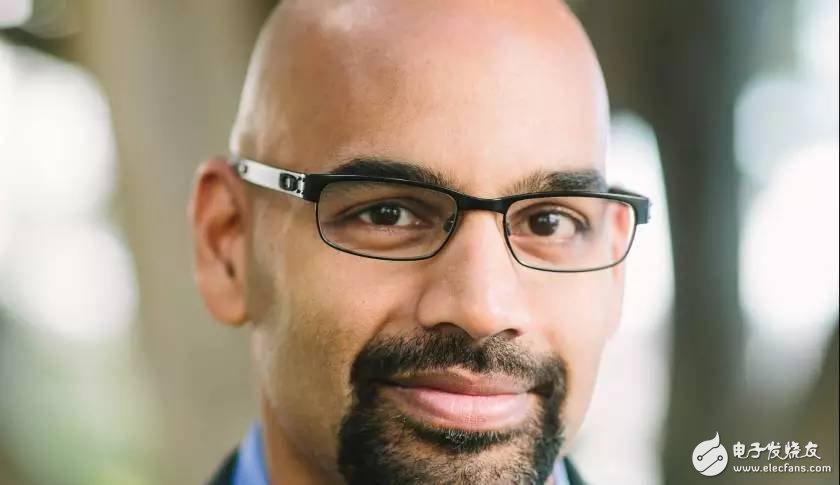Nervana Systems released the Deep Learning Cloud and developed a chip designed for artificial intelligence.
After two years of hard work and more than $24 million in investment, Nervana Systems has released its deep learning cloud, so any business can create computer models that will learn. Consumers who are already ready to use it to help create farm-based artificial intelligence robots, use photos to find possible crude oil distribution points, and identify fraudulent trading activities.
The startup Nervana, which created a deep learning-specific chip, was founded by Naveen Rao (who was also the former head of the Qualcomm artificial intelligence chip project) and two others (also from the mobile chip company). Their goal is to create a new processor that models the capabilities of the human brain. But first they started by providing cloud services and daily image processors to make money and test the software.
Today, Nervana's cloud is based on image processors purchased from Nvidia, but the Nervana founders hope to replace this fundamental hardware with their own dedicated chips by the end of 2016. By then, the founders will redesign the firmware used by the Nvidia chips and build their own software frameworks, enabling deep learning to run faster on their cloud.
The software framework, called Neon, will compete with Torch and Caffe, as well as software from Google (TensorFlow) and Microsoft (CNTK). Rao is convinced that his software will run ten times faster on Nvidia NVDA hardware and even run faster than Nvidia's own software framework. This speed is critical because training a neural network and running it usually takes weeks or even months. Therefore, any increase in speed, even half the time, will be a very effective improvement.
Steve Jurvetson is a partner at DFJ and is part of the Nervana Board of Directors. He believes that the evolution of deep learning is necessary for companies and even makes sense for the data they collect. This is also the area where Nervana can make a difference in the near future. "The world is in the era of big data," he said. "Think about it, the satellite image allows you to count every tree or every car in the parking lot. Think again, every day, everybody counts every car or tree. This is a huge amount of data, and it is difficult for humans. Processing. And this is the field of deep learning."

Naveen Rao, co-founder and CEO of Nervana
Get the data sheet, this is the technical newsletter of Fortune.
For example, one of Nervana's customers, Paradigm, developed the original exploration software, which was used by Google to train a deep learning network to learn how to identify a cat's computer vision for crude oil. The company has found thousands of seismic images and trained neural networks to find the default type of area where crude oil may be concentrated into slices. Once trained, they can upload their images to the Nervana cloud and get feedback to know where to drill. This laborious search may have cost geologists a few years in the past.
This is the result of the present. However, Rao is more advanced. Like many others, he realized that the development of artificial intelligence requires a new chip architecture. Therefore, Nervana's long-term goal is to build a new type of semiconductor that will acquire some design elements from the human brain.
Therefore, like IBM, the long-term work of creating silicon-based brains is limited by the nature of silicon, which is a fundamental element of current semiconductors. In the human brain, information is transmitted to neurons by synapses, and each neuron has thousands of synapses. Reproducing such an information transfer structure in hardware requires too much wiring. So chipmakers turned to software to create the I/O on the chip we know.
By running software that controls the Internet's large routes, Nervana attempts to use software to model complex information transfers in terms of statistics rather than physical connections. Another important element of the deep learning chip is the ability to run in parallel, which is what some image processors are good at. This is also the reason for deep learning Nvidia's leadership, but as many other startups have pointed out, Nvidia has no I/O.
Combining the two is also something that researchers, startups, and large companies like IBM are trying to create, so they can create hardware that can better accommodate artificial intelligence. At the same time, in the cloud, Nervana will compete with Minds.ai, which also developed a chip and provides deep learning clouds; and IBM Watson; MetaMind (image recognition); Skymind (providing deep learning applications), etc. Wait.
Nervana Systems is supported by DFJ, DCVC, Allen & Company, AME Cloud Ventures, Andy Rubin's Playground Global, CME Group, Fuel Capital, Lux Capital, and Omidyar Network. Clients to date include the Chicago MercanTIle Exchange, the agricultural robot creation company Blue River Technology, and Paradigm.
Features: self-wrapping braided sleeving
• Easy, cost and labor effective installation
• More flexible than split convoluted or spiral wrap
• 50% edge overlap
• Cut and abrasion resistant
• Halogen free
• Retains shape and rigidity throughout -50°C to 150°C temperature range
• melt temp. 250°C
Description: Braided Wrap Around Sleeving,self wrap cable sleeving
1. Braided Wrap Around Sleeving offers innovative solutions for the protection of breakout areas
and provides easy removal when is necessary an inspection or maintenance of cables.
2. The special open structure allows to be installed after other components, for example copper terminals and connectors.
3. A strong resilience protects wires and cables and meanwhile provides exceptional abrasion and flame resistance.
Self Wrap Cable Sleeving,Self Closing Sleeving ,Self-Wrapping Braided Sleeving ,Electrical Wire Sleeve
Shenzhen Huiyunhai Tech.Co.,Ltd , https://www.hyhbraidedsleeve.com